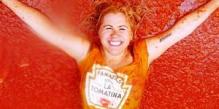Two more AFL players on two strikes
Two more AFL players have joined the group of footballers who sit one positive test away from being suspended for up to 18 games for illicit drug use.
But the AFL claims it is winning its war on illicit drugs through out-of-competition testing, but has plans to cast its net further.
The AFL recorded 12 positives tests in 2008, down from 14 in 2007, which represents fewer than one per cent of the AFL player population. There are 738 players on club lists this year.
Those positive tests comprised 11 players - nine caught for the first time, one who tested positive twice in the year spanning February 2008 to February 2009, and another who tested positive a second time having also done so over the previous three years.
The two players who recorded their second failed test took to seven the number of footballers across the league sitting on two strikes, who will be named and called before the tribunal if they notch a third positive test.
Another player twice tested positive between 2005-09, but is no longer playing.
Of the 12 positive tests recorded in 2008-09, three were for cannabinoids, eight for stimulants and one for a mixture of both.
Under the league's illicit drugs policy, players who test positive either once or twice are protected by anonymity, so that only they, their club doctors and AFL medical officers know.
They are also offered extensive counselling and education services, and are subjected to target-testing.
Of the 1,220 tests carried out by the AFL last year, every player was tested at least once, but some were asked to provide urine samples on 20 separate occasions.
Despite the league's education policy and the threat of being caught, some players used illicit drugs.
But the AFL maintained its policy was successful in reducing the number of players who did so.
AFL football operations general manager Adrian Anderson said he was not surprised some players used drugs even though they had been caught previously.
"It doesn't astound me at all," he said.
"It's inevitable with the group as large as what we've got that there will be some players who from time to time make bad decisions and the role of this policy is to address those bad decisions and change their behaviour.
"These results show that is what's happening."
Anderson said the proportion of players who had tested positive in the last sample - 0.98 per cent - would compare favourably to most workplaces in Australia.
The AFL plans to conduct 1,500 tests in 2009-10, including a trial period of testing hair samples during players' holiday time.
AFL Players' Association (AFLPA) chief executive Brendon Gale supported further testing, as the union was motivated by addressing the health of their and welfare of players.
"If that means players who need support have the opportunity to change their behaviour then I'm comfortable with that," Gale said.
Gale said the AFLPA was encouraged by the results, and acknowledged the players' preparedness back in 2005 to agree to out-of-competition drug testing.
But he also highlighted the difficulties in eliminating all drug use among a large group of young men.
"It's a factor that perhaps our guys are risk-taking individuals almost by definition, and it's also a factor that alcohol is also involved," he said.
The AFL has a separate in-competition drug policy that tests for performance-enhancing substances.
 © 2025 AAP
© 2025 AAP















Post a comment about this article
Please sign in to leave a comment.
Becoming a member is free and easy, sign up here.